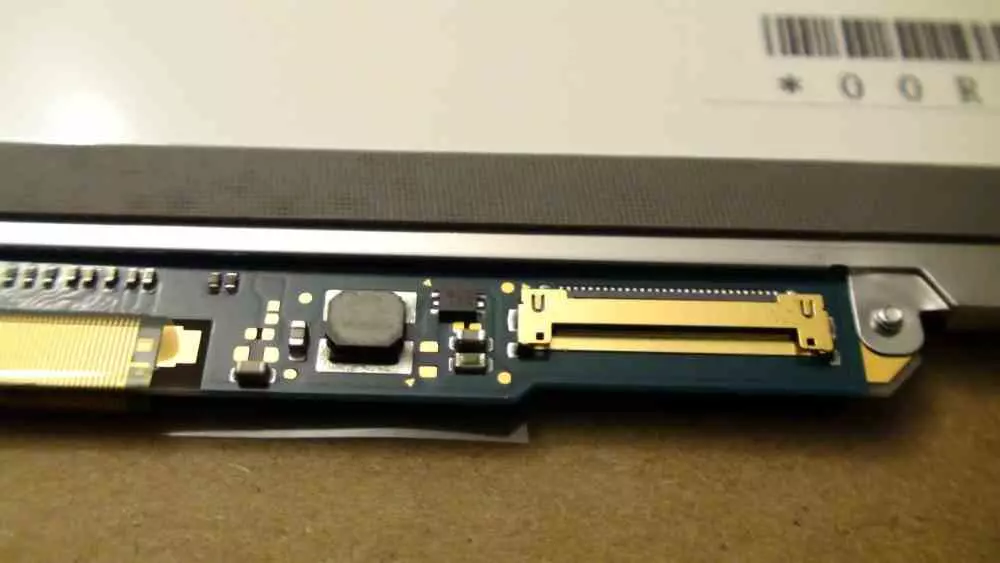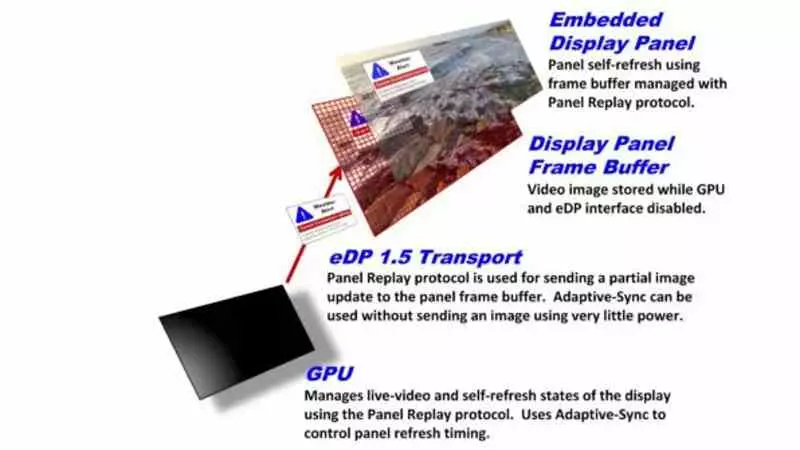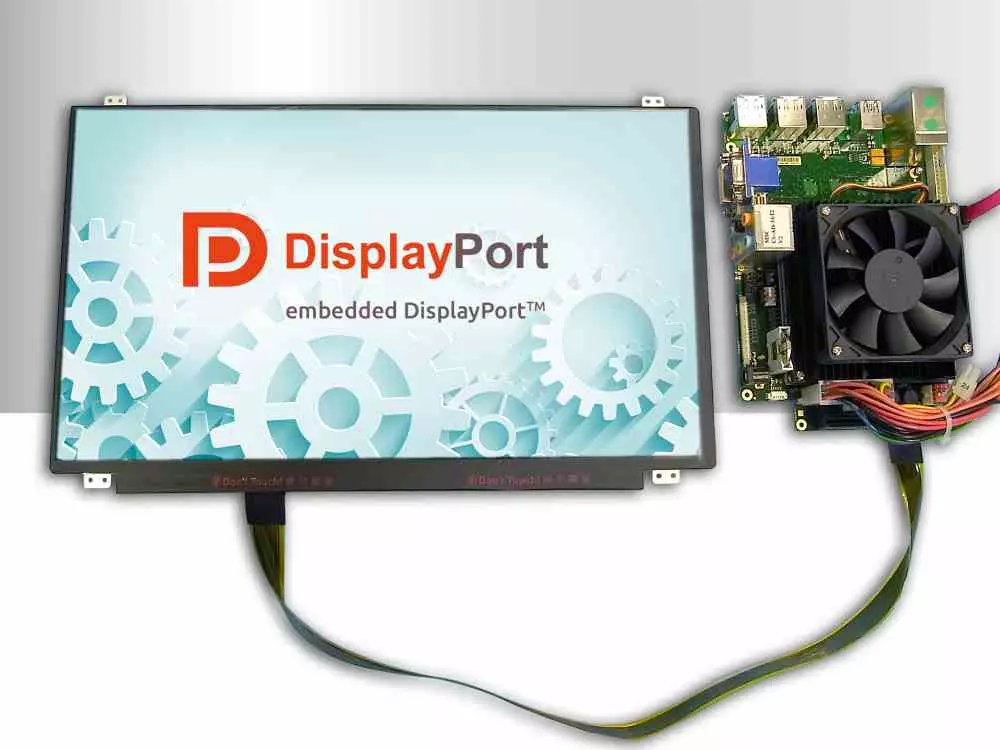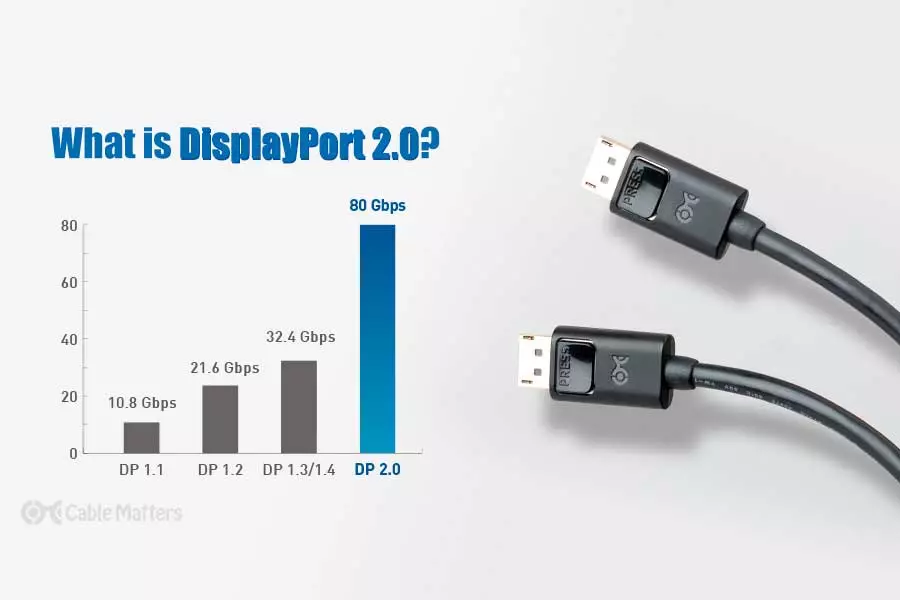
Another function of the eDP interface is to feed the screen, not only transmit the video signal, since in the devices that have it embedded, they do not have an additional external power port.
Relationship with the GPU
Internally the eDP does not differ at all from a DisplayPort interface. It is when the internal wiring reaches the perimeter of the device board that its signal is transformed into an external interface, which can be an eDP connection to connect the screen of a tablet or laptop, a conventional DisplayPort output in any of its variants , a USB-C Alt-DP output and even an HDMI output if there is such a controller in between.
And here we enter a little secret, at the level of generating the signal for several screens at the same time, the part of the GPU in charge of it has an eDP interface per supported screen, which is converted on the fly into another type of signal if the device needs it. In other words, your gaming graphics card also uses an eDP interface.
What is eDP 1.5?
Normally, eDP and Display Port standards go hand in hand, but the body in charge of creating these standards, VESA, has decided to give the umpteenth version of its embedded DisplayPort the name eDP 1.5, instead of 2.0. This comes after 6 years, since its predecessor, the eDP 1.4b was released in 2015 and the new version of the standard is an incremental improvement over the previous one. Which means that it does not delete anything, but rather adds improvements on what has already been done previously.
The first novelty to highlight is about the screen refresh author, to understand it we have to imagine that we have our computer or smartphone stopped doing nothing at all and it does not stop sending, therefore, the same image over and over again. This means that the GPU and video RAM will be active. Well, with the refresh author mode we can make the screen store the last image shown in an internal memory and read its information from there while we have the GPU turned off. This means great energy savings.
Another important point that we think should be highlighted is the ability to disconnect the sending of data to the panel in the periods in which it is not necessary to send the information, known as VBlank. This is crucial for when we do not have an image buffer in the system and the image is rendered line by line, in the style of old televisions.
eDP 1.5, designed to save on consumption
One of the improvements that VESA has added in eDP 1.5 is the so-called Replay Panel, which allows us to update only parts of the screen in particular while leaving the rest completely intact, for this it also takes advantage of the ability to store in memory the last image displayed.
In general, the eDP 1.5 interface is designed to increase or reduce its consumption according to the level of workload to be carried out. Thus, not only in lower resolutions and refresh rates it will consume much less than in higher ones, but it will also not emit anything during the periods in which the signal is not sent to the screen. Especially highlighting the inactivity between frames.
Even if the screen does not show anything, the fact that the signal is active is a significant energy consumption. Turning off frame delivery temporarily also involves turning off the system’s graphics hardware for that short period of time or reducing its clock speed.
A-SYNC for movies on eDP 1.5

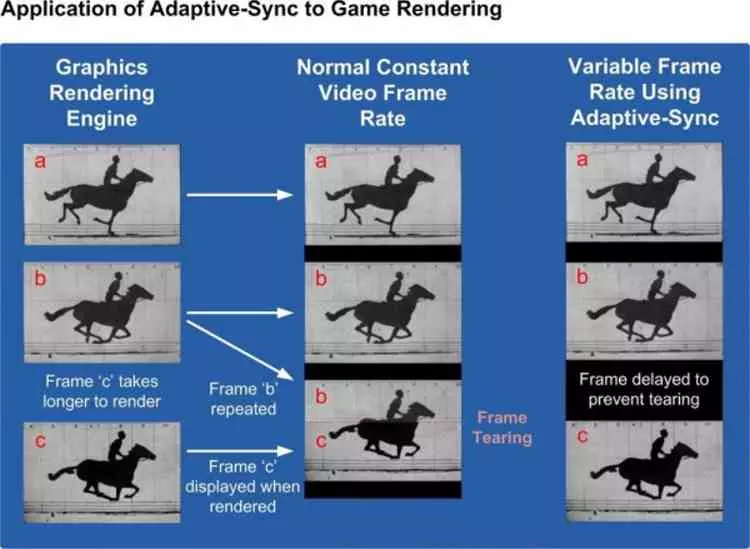
The Adaptive Sync consists in that the refresh rate and, therefore, the update rate of the screen is not controlled by the internal processor of the screen, but by the graphics hardware itself to which the screen is connected. Which in the case of your computer would be the graphics card. This ability was already in the previous version, but has been slightly improved in the new version.
It is a function related to video games where these tend to fluctuate unless we play with variable resolution, in which the FPS rate is maintained by sacrificing the amount of pixels on the screen for it. Well, in eDP 1.5 this has been added for video playback in order to eliminate frame duplication, known as stuttering, and frame skipping.
For gaming panels, VESA has added new mechanisms in the new standard to reduce flicker on high-frequency screens.
Related to DisplayPort 2.0
All the novelties that we have described require to be supported at the hardware level. Which translates into making changes to the display driver found on the GPU, it is a video communication protocol that at the end of 2021 we have not yet seen a single product announced that supports eDP 1.5.
And the necessary changes not only have to be made in the hardware that generates the frame and receives it, but also in the hardware that receives it to show the image that are the screens themselves. This reminds us that a good part of the DisplayPort 2.0 functions are in the eDP 1.5. For example, a laptop with an internal eDP 1.5 interface is most likely to have a DisplayPort 2.0.
